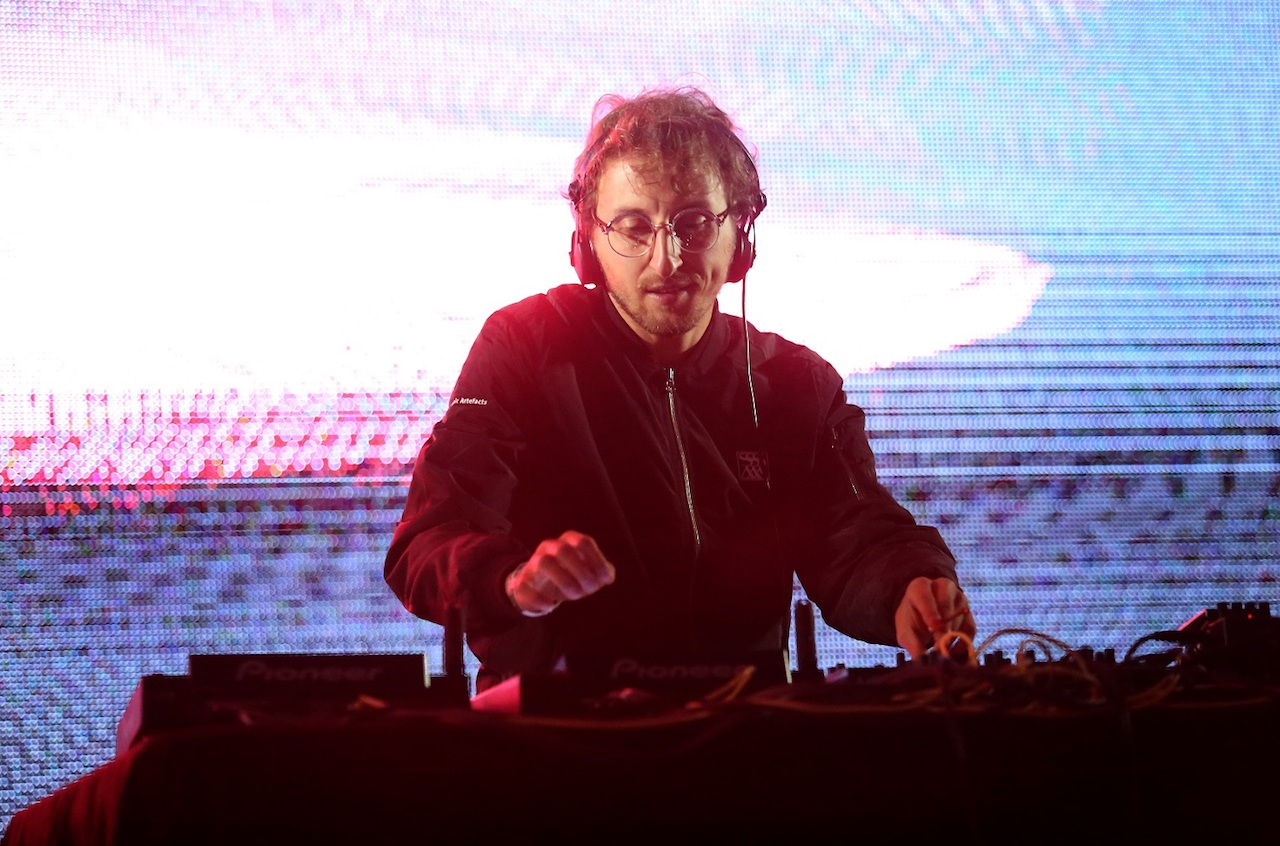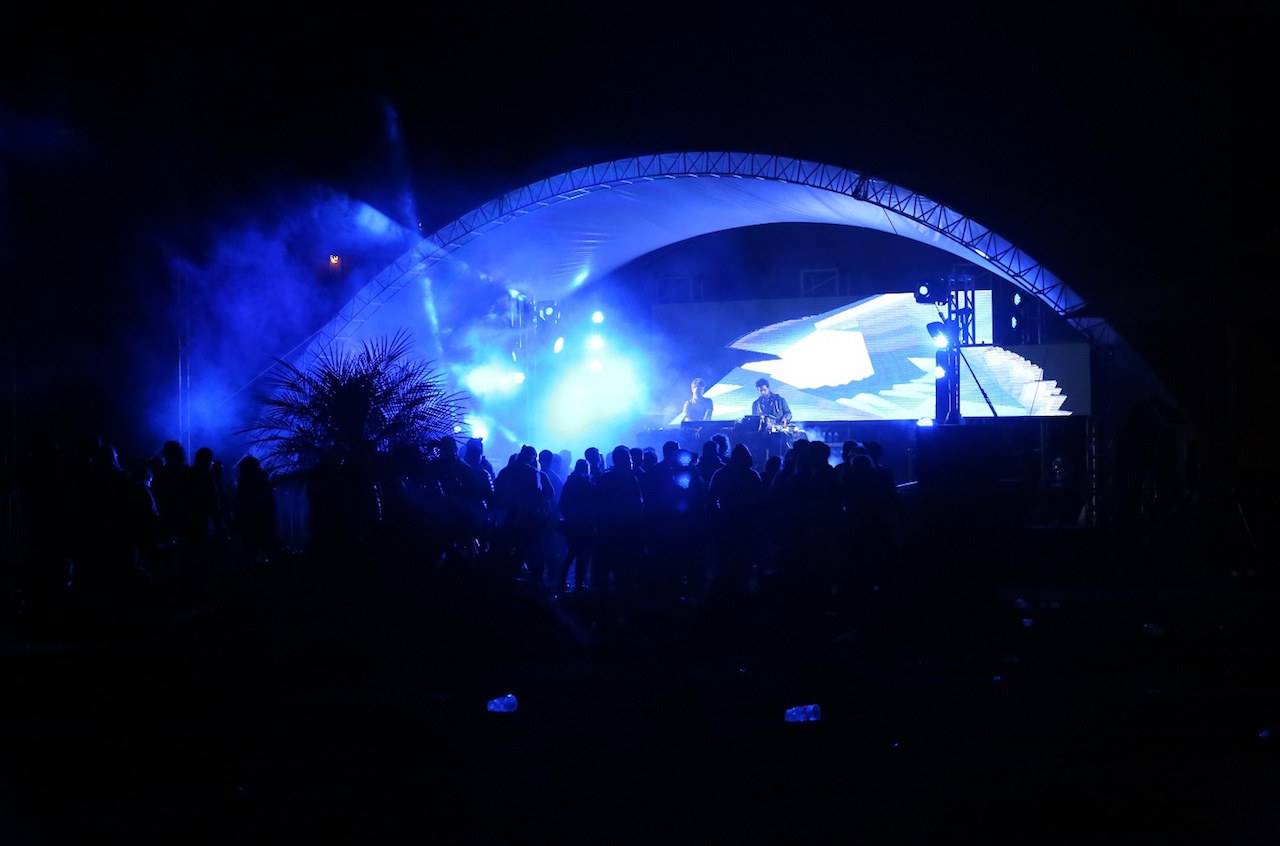- Even the four-hour bus delay couldn't get the crowd down. Mexico City traffic is among the worst in the world, so a two-hour ride had stretched to six, most of which was spent gridlocked only a couple miles from the point of departure. 200 people sat packed onto two buses travelling towards a village called Metepec, at the base of an active volcano in Central Mexico, where the first Fascinoma weekender was taking place.
The festival—comparable in size to Sustain-Release or Freerotation—went down at the Metepec Vacational Center, a hotel and resort built in the 1980s on the site of a sprawling former textile factory. The place was bizarre but charming and oddly isolated, threaded with dark hallways that led to locked rooms and forest paths where the lamps no longer worked. The furniture hadn't been changed since the early '80s, and its industrial halls were so massive that even with hundreds of people roaming the grounds it was easy to end up in a spooky dead-end by yourself. But the real talking point of Fascinoma was the lineup, a broad-minded, international spread that included Larry Heard, Mala, Kode9, Deepchord, Machinedrum, Joey Anderson and Dâm-Funk.
At the edge of the grounds was the intimate UFO stage, a tree-lined clearing that catered to the bass music crowd. Kode9 was in fantastic form, bringing the house down on Friday night with a set that ran from 4 AM until around 8:30 AM. It zig-zagged between ice-cold UK rap, blistering grime and a bunch of mind-bending bass mutations that proved exactly how much great music is being made at 160 BPM these days. He peppered it with a number of exciting jungle-footwork hybrids that sounded very much like forthcoming Kode9 material.
Mala executed the only wheel-up I heard all weekend. The South London star delivered the ideal ratio of dubstep classics, like Digital Mystikz's "Anti-War Dub" and Kahn's "Dread," with more modern 140 BPM experiments, and I didn't see a more hyped-up crowd at any point during the festival. He ended with Bob Marley's "Is This Love," which made a few of my friends roll their eyes and head to the techno stage—though I thought it was perfect. Gaslamp Killer was another unexpected MVP for me, maybe because he was the only artist who bothered to interact with the audience. The foundation of his set was built from wonky, demented hip-hop tracks, which he introduced by yelling into the microphone—"This is real LA shit!" He mixed them with a bunch of Syrian and Turkish psychedelia, before bowing out with a few Chicago footwork classics—DJ Spinn's "Buss Down" and DJ Rashad's "CCP" among them.
Larry Heard, AKA Mr. Fingers, was the weekend's most anticipated act, playing the main stage on Sunday morning. The Chicago house pioneer has had a career revival this year, and his poignant melodies and easygoing grooves had the crowd attentive, while his unpolished singing made the whole thing more approachable. Italian techno producer Lucy killed the late slot, playing peak-time tracks that skewed more towards muscular DJ tools than the atmospheric psychedelia of his recent work. As dawn gave way to broad daylight, he was still banging it out to a dance floor that seemed to have grown rather than dwindled.
My only issue with the main stage was the rock festival-style layout, with a standard stage looking out on an open field. There were never enough ravers to pack the floor, and it lacked the architectural spark to make it feel like something more than an empty plane. The weekend was also checkered by organizational issues, which were forgivable considering it was the festival's first year. The bars, for instance, only served beer—after three days of not being allowed to leave the grounds, I felt like a leaky water balloon. The schedule for Saturday night also included a separate stage for audiovisual and ambient projects, though I gave up trying to find it after an hour of canvasing the property. Nobody seemed to know where they had hidden it, and there didn't seem to be any signs or maps to make it any clearer.
Even the disorganization was kind of a blast, though, and it would have taken a lot more to dampen the high spirits. Fascinoma was a first for the Mexico City scene, with its stacked lineup of international artists spread out across many genres and regional scenes. The team did an impressive job of building coalitions with local promoters and DJs, unifying different crowds from Mexico City's notoriously fractured club scene. They invited artists from many of the capital's hardest-working crews—house and techno collectives like Dance Your Name and Cuatro Cuartos Bestial who have spent years building a scene in a city that isn't always grateful for their efforts.
The only unforgivable failure that they'll have to reckon with next year was the lack of female artists on the lineup, which worked out at a ratio of roughly one to ten. It's not just a question of fairness, but a red flag that means the curators may not have been thinking critically in terms of how to book differently from similar events. Otherwise, the first edition did everything to suggest that Fascinoma is on its way to becoming both a local and international tradition.
Photo credit /
Elizabeth Cacho
 My only issue with the main stage was the rock festival-style layout, with a standard stage looking out on an open field. There were never enough ravers to pack the floor, and it lacked the architectural spark to make it feel like something more than an empty plane. The weekend was also checkered by organizational issues, which were forgivable considering it was the festival's first year. The bars, for instance, only served beer—after three days of not being allowed to leave the grounds, I felt like a leaky water balloon. The schedule for Saturday night also included a separate stage for audiovisual and ambient projects, though I gave up trying to find it after an hour of canvasing the property. Nobody seemed to know where they had hidden it, and there didn't seem to be any signs or maps to make it any clearer. Even the disorganization was kind of a blast, though, and it would have taken a lot more to dampen the high spirits. Fascinoma was a first for the Mexico City scene, with its stacked lineup of international artists spread out across many genres and regional scenes. The team did an impressive job of building coalitions with local promoters and DJs, unifying different crowds from Mexico City's notoriously fractured club scene. They invited artists from many of the capital's hardest-working crews—house and techno collectives like Dance Your Name and Cuatro Cuartos Bestial who have spent years building a scene in a city that isn't always grateful for their efforts. The only unforgivable failure that they'll have to reckon with next year was the lack of female artists on the lineup, which worked out at a ratio of roughly one to ten. It's not just a question of fairness, but a red flag that means the curators may not have been thinking critically in terms of how to book differently from similar events. Otherwise, the first edition did everything to suggest that Fascinoma is on its way to becoming both a local and international tradition.
My only issue with the main stage was the rock festival-style layout, with a standard stage looking out on an open field. There were never enough ravers to pack the floor, and it lacked the architectural spark to make it feel like something more than an empty plane. The weekend was also checkered by organizational issues, which were forgivable considering it was the festival's first year. The bars, for instance, only served beer—after three days of not being allowed to leave the grounds, I felt like a leaky water balloon. The schedule for Saturday night also included a separate stage for audiovisual and ambient projects, though I gave up trying to find it after an hour of canvasing the property. Nobody seemed to know where they had hidden it, and there didn't seem to be any signs or maps to make it any clearer. Even the disorganization was kind of a blast, though, and it would have taken a lot more to dampen the high spirits. Fascinoma was a first for the Mexico City scene, with its stacked lineup of international artists spread out across many genres and regional scenes. The team did an impressive job of building coalitions with local promoters and DJs, unifying different crowds from Mexico City's notoriously fractured club scene. They invited artists from many of the capital's hardest-working crews—house and techno collectives like Dance Your Name and Cuatro Cuartos Bestial who have spent years building a scene in a city that isn't always grateful for their efforts. The only unforgivable failure that they'll have to reckon with next year was the lack of female artists on the lineup, which worked out at a ratio of roughly one to ten. It's not just a question of fairness, but a red flag that means the curators may not have been thinking critically in terms of how to book differently from similar events. Otherwise, the first edition did everything to suggest that Fascinoma is on its way to becoming both a local and international tradition. Photo credit / Elizabeth Cacho
Photo credit / Elizabeth Cacho